Glass from A - B
Here you can learn everything about the production of glass
A - Egyptian glass
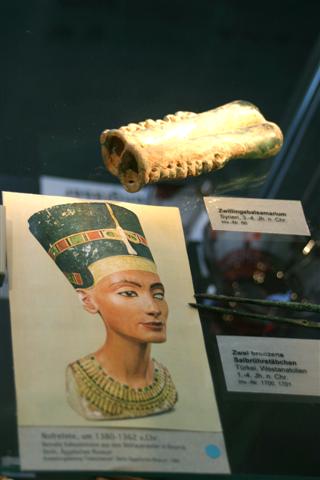
A for Egyptian glass, including glass beads, amulet pendants and small vessels for precious ointments and oils, was produced by glassmakers in Egypt from around 1500 BC. Initially, imported raw glass in the form of chunks or coloured glass ingots from the Near East (including Mesopotamia) was probably used. The earliest discovered glass workshops in Egypt are in the area of the palace of Amenophis III. (c. 1388-1351 BC) and in el-Amarna.
Glass from C - E
C - Christmas tree decorations from Gablonz/Bohemia
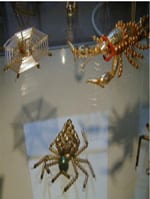
C for Christmas tree decorations from Gablonz in Bohemia has its origins in the bead and button industry.
The glass bead formations strung together on threads show spiders, sleighs, stars, zeppelins and other everyday objects and thus provide a reflection of society at the time.
Glass from F - G
F - flacons
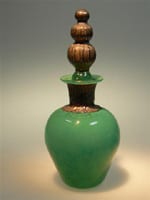
F for flacons are nothing more than containers for fragrance. Catherine de Medici (1519-1589) brought perfume to the courts of Europe. The nobility preferred flacons made of clear lead crystal glass for individual perfume containers - they conveyed luxury and elegance. In the 19th century, flacons made of strong colours such as ruby red, agate green or cobalt blue came into fashion.
Glass from H - K
H - Handled glasses, tankards
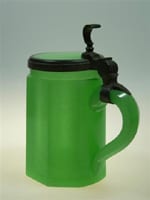
Since the 19th century, H glasses or tankards have been considered the "classic" vessel for beer.
Glass from L - Q
L - Laboratory glass
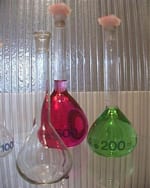
L for laboratory glass shows the products of the "Glaswerk Wertheim" (1950-1994) and the laboratory glass industry in Wertheim that still exists today.
Glass from R - Z
R - Raw materials
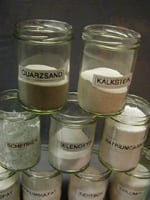
R for raw materials for the batch for glass production. There are up to 1000 different recipes today - depending on what the glass will be used for later.